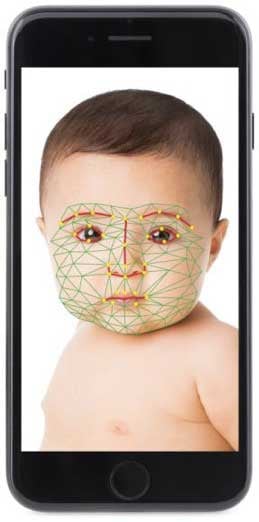Smart phone-based pain assessment and monitoring application developer PainChek Ltd (ASX: PCK) has received the necessary regulatory clearances including the CE Mark and UK MHRA that allow for sales and marketing of its PainChek Infant offering in Australia, Europe, UK, Canada, Singapore and New Zealand.

The regulatory clearances follow completion of the PainChek’s Infant Face-Only study, which demonstrated positive findings and is being peer-reviewed for publication. Findings from the study support the clinical indication for procedural pain assessment and PainChek infant is now cleared for use with infants aged between one month to 12 months.
PainChek will now progress with launch plans for PainChek infant in these markets and will pursue opportunities in the key Hospital and Home Care markets, with potential users including children’s hospitals, post-natal wards, parents and other healthcare professionals.
CEO, Philip Daffas, said with 400 million pre-verbal children in the world, of which it is estimated 100 million are born to first time parents, PainChek Infant is now able to access a very large new market opportunity.
The company will also continue to expand the PainChek clinical applications and broaden the age ranges for Children’s pain assessment through additional research and clinical studies including the existing study at the Royal Children’s Hospital (RCH) in Melbourne.
We’re delighted to achieve this regulatory milestone ahead of schedule and continue to expand PainChek’s global markets,” Mr Daffas said.
“The PainChek Infant App is unique in that it completes a microfacial analysis through a three second video assessment and provides the carer with an instant result in relation to the infant’s pain severity level.
“PainChek now assesses and automatically documents pain scores for adults who cannot verbalise, adults who can self-report and now infants. PainChek is rapidly becoming a universal pain assessment system for all people, everywhere.
Having established the initial PainChek Adult App and the business model in aged care, this broad portfolio of offerings provides the foundation for our global market entry into the larger home care and the hospital markets. It’s a truly exciting time for the company”.
Existing clinical paper-based tools to assess pain for pre-verbal children, such as the FLACC, have been available for some time, however they are rarely used in clinical practice with clinicians and nurses often relying on clinical observations to assess pain of which the infant’s facial expressions are the most critical. High levels of exposure to painful face expressions can lead to observer bias, with some healthcare professionals showing an exaggerated underestimation of pain. PainChek Infant’s automated facial analysis addresses this problem.
The PainChek infant Face-Only study was developed to test the feasibility of using PainChek Infant’s face domain alone as an indicator of pain, and to evaluate it using video recordings of infants undergoing painful procedures.
The study involved PainChek Infant face domain scores being compared with assessments conducted using the Revised Neonatal Facial Coding System (NFCS-R) and the Observer Visual Analogue Scale (ObsVAS).
Both NFCS-R and ObsVAS are well known and validated scales used in assessing procedural pain in infants, such as vaccinations, finger and heel pricks, dressing changes or more invasive procedures such as biopsies. Findings from the study supported the validity and reliability of PainChek Infant for procedural pain assessment. Procedural pain represents a significant problem as it can have both short-term and long-term negative consequences on children’s health if not managed effectively.




